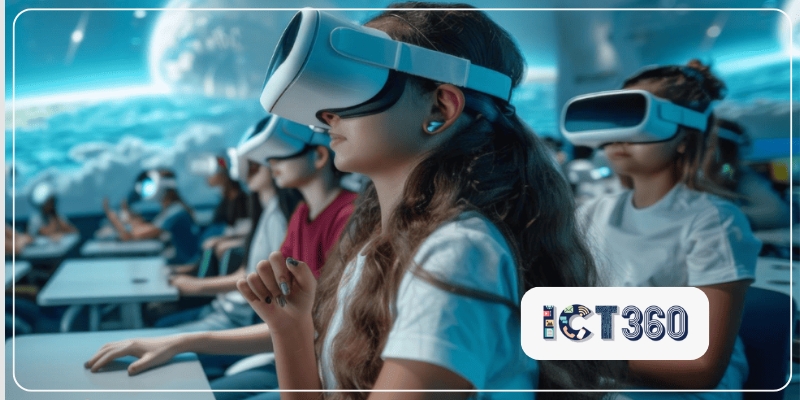
Why ICT 360 Is the Ideal AI and Coding Curriculum for Schools
As the world moves towards a future defined by automation, data, and innovation, schools must take the lead in preparing students for tomorrow’s careers. Traditional computer science education is no longer sufficient — students need real exposure to artificial intelligence, coding, and digital skills from an early age. That’s where ICT 360 steps in with a dynamic, future-ready AI and coding curriculum for schools.
Introducing ICT 360: Bridging the Gap Between Theory and Real-World Tech
ICT 360 is a comprehensive TechEd ecosystem tailored for Grades 1 to 10. Designed to be engaging, inclusive, and industry-aligned, the curriculum blends artificial intelligence, coding, design thinking, and digital citizenship to create a well-rounded, project-based learning experience.
Rather than treating tech as a side subject, ICT 360 integrates it into the core educational framework — making digital literacy and innovation a natural part of a student’s journey.
The 5 Pillars of ICT 360
- Artificial Intelligence (AI): Students understand the basics of AI, its real-world applications, and even train their own AI models using intuitive, age-appropriate tools.
- Coding and Computational Thinking: From visual programming tools like Scratch to text-based languages like Python and JavaScript, students progress through logical stages of coding proficiency.
- Digital Literacy and Cyber Ethics: Teaching responsible use of technology is critical. ICT 360 includes lessons on online safety, privacy, digital footprints, and responsible content creation.
- Project-Based Learning: Students work on real-world projects that apply classroom concepts to problems in the environment, society, and personal life.
- 21st-Century Skills: Collaboration, creativity, critical thinking, and communication are woven throughout the curriculum through peer interactions and project showcases.
Designed for Schools, Empowering for Teachers
ICT 360 isn’t just a student-centric platform — it’s a teacher’s best ally. The platform offers full classroom support including:
- Detailed lesson plans and activity guides
- Interactive multimedia content
- Assessment tools (both formative and summative)
- Regular teacher training and technical support
This ensures that even educators with limited tech experience can confidently deliver lessons and foster engaging learning environments.
Learning by Doing: The ICT 360 Approach
ICT 360 flips the script on traditional tech education. Instead of focusing solely on syntax or memorization, it encourages experimentation, problem-solving, and creativity. For example:
- A Grade 4 student might create a simple animation about environmental conservation using block coding.
- A Grade 7 learner might develop an AI tool that classifies images based on emotions.
- High schoolers could build chatbot prototypes or websites that solve a community issue.
This approach ensures students aren’t just absorbing knowledge — they’re actively applying it in innovative, meaningful ways.
Aligned with NEP and Global Standards
ICT 360 is fully aligned with the National Education Policy (NEP) 2020, which emphasizes foundational numeracy, early exposure to technology, and skill-based education. The program also incorporates elements from international frameworks like ISTE and CSTA, making it suitable for schools following IB, IGCSE, CBSE, and state boards.
By integrating both Indian and global standards, ICT 360 ensures academic relevance while cultivating global competencies.
Scalability and Flexibility
ICT 360 is built to serve diverse educational settings. Whether your school has a full-fledged lab or just a few devices, the program is modular and flexible enough to work in any environment. It supports:
- Offline, hybrid, and fully online formats
- Curriculum integration or standalone ICT classes
- After-school and summer enrichment programs
Even better — ICT 360 can be scaled across multiple grades or campuses with ease, making it a long-term solution for schools looking to future-proof their curriculum.
The Value of Early Exposure to AI and Coding
The earlier students are exposed to digital tools and computational thinking, the stronger their foundations will be. With an early and sustained approach to coding and AI, ICT 360 builds tech fluency and problem-solving confidence from a young age. This not only benefits students who want careers in tech but also those pursuing medicine, law, business, or the arts — fields where digital competency is now essential.
Having a structured AI and coding curriculum for schools ensures that learners are not only consumers of technology but creators and innovators in their own right.
As industries evolve and technology becomes a cornerstone of every profession, schools have a responsibility to lead this shift. ICT 360 offers the perfect blend of modern content, hands-on learning, and support to empower the next generation.
With an AI and coding curriculum for schools that is engaging, scalable, and aligned with future demands, ICT 360 isn’t just teaching technology — it’s inspiring a generation of thinkers, problem-solvers, and change-makers.









Recent Comments